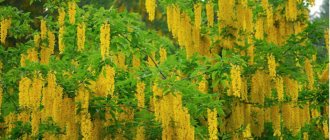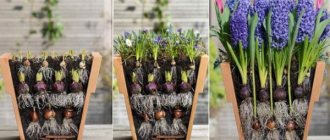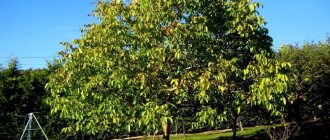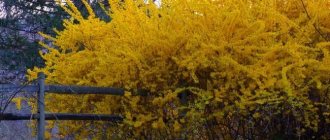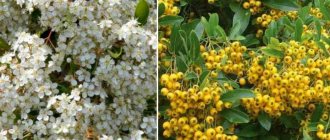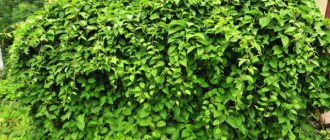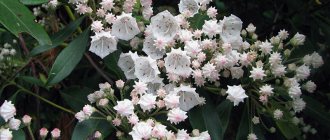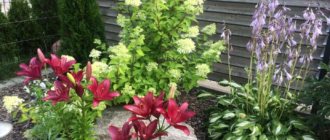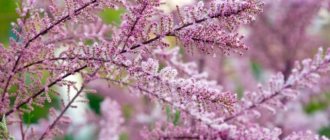The topic of our article (“Lavender: planting and care in the Moscow region”) is of interest not only to those who are just beginning to communicate with the world of flowers. Even experienced gardeners need information in order to behave correctly in the process of communicating with a particular plant. Before planting lavender, you need to carefully study all the features of this procedure, as well as the basic requirements for caring for the flower. As a result, the whole process will be completed successfully, and you will receive a reward in the form of a beautiful flower bed that will be the envy of everyone around you.
Basic information
Lavender is a subshrub from the Lamiaceae family. Its closest relatives are rosemary, mint and thyme. In nature, lavender is found near the Mediterranean Sea. In total there are approximately 28 varieties of this plant. Lavender is actively used in the perfume industry to create perfumes, eau de toilette and scented soap.
Appearance
What is culture? Lavender has excellent decorative qualities. Narrow leaves grow on the branches of the subshrub, the length of which does not exceed 5 cm. They are covered with silvery hairs on top. The inflorescences have a soft purple color. Lavender begins to bloom at the end of June and pleases the eye of gardeners until mid-August.
The plant retains its amazing aroma even in dry and processed form. That's why the French became interested in this plant. Today you can find many cosmetic products with lavender scent. Many well-known perfume companies use the oil of this plant to create fragrances.
Varieties
Let's look at them in more detail. Is lavender suitable for the Moscow region? The varieties grown in our latitudes are listed below.
- English lavender. Quite an unpretentious variety. These are compact bushes with elongated leaves of gray-green color. English lavender blooms from June to July. This variety is resistant to frost, so it is excellent for our latitudes.
- Dutch lavender. It is the largest representative of this genus. The bush can reach two meters in height. As a rule, this variety of lavender is grown for industrial purposes.
- Jagged Lavender. This variety is heat-loving, so it is more suitable for growing indoors. It is distinguished by delicate lilac inflorescences and silvery petals.
Growing Lavender
How to choose the right place to plant lavender? Does it grow in the Moscow region? As everyone knows from Sofia Rotaru’s song, lavender is a mountain flower. This means that it does not like soil that is too wet and where water stagnates. Lavender roots grow strongly, which allows the plant to extract liquid on its own. The flower grows best in well-drained soil in a sunny location.
Growing lavender in the Moscow region will allow you to achieve the desired result if you choose the right place for planting. Preference should be given to open, sunny, elevated areas. Of course, lavender can also grow in the shade, but in this case the flowering will not be so abundant and lush.
The roots of the plant react extremely negatively to waterlogging of the soil. Therefore, planting lavender in places with stagnant water is highly not recommended. If there is no suitable place for planting, then it is better to create an artificial embankment
Most often, lavender is planted along paths. It will go well with roses. Blue lavender flowers look great against a backdrop of red and orange flowers. You can also grow hydrangeas next to it. The fragrant shrub is often used to create flower arrangements on alpine hills. You can try planting a large area with lavender as an experiment. As a result, you will get an incredibly fragrant and bright carpet of fresh flowers.
Where to plant lavender on the site?
Lavender loves warmth and light. To get beautiful bushes, you need to choose the right place to plant and soil. Loves alkaline environment. If there is no elevated area on the territory, it must be artificially raised for planting.
Tips for choosing a landing site:
- Do not plant in acidic soil. Sandy and loamy soils are ideal.
- Does not tolerate areas with shallow groundwater.
- Lavender needs a sunny, windless place. In such a place it blooms profusely.
- Soil acidity should be within pH 6.5 - 7.5.
- Fertile land is needed.
- It is better to choose an elevated area.
- Looks great near curbs, house walls, paths.
- Does not tolerate swampy, waterlogged areas.
- It goes well with cleome, helichrysum, and Spanish gorse.
The roots reach 2 - 3 meters in depth, so the shallow occurrence of groundwater is detrimental for them. In heavy peat soils, lavender thrives.
Reproduction methods
Let's stop here to study the issue in more detail. Many novice gardeners who are interested in the possibility of growing lavender in the Moscow region are also concerned about propagation methods. Is it possible? Yes, there are even several basic ways:
- Dividing the bush. This method is suitable if you have mature plants at your disposal. To do this, in the spring you should sprinkle the mother bush with soil in such a way as to separate the cuttings. In the fall they can be planted in different places.
- By cuttings. A simple and convenient way. In the spring, cuttings 10 cm long should be cut from lignified shoots. After this, they are planted in a greenhouse in moist, loose soil. Young plants should be constantly ventilated and watered. In the fall, rooted cuttings can be transplanted to a permanent location.
- By layering. Another simple and effective way to propagate lavender. In the spring, you need to bend the shoot back, then bend it down and sprinkle it with a little soil. By autumn, roots will grow in this place. After this, the cuttings can simply be cut off and transplanted to a new location.
- Seeds. This is the most difficult method of propagating lavender. It can only be done by experienced flower growers. Seeds are usually sown in spring. A couple of months in advance, the seed must be placed in wet sand and kept in the cold. Seeds may not germinate without stratification. You can plant lavender seeds in open ground in the fall. Then in winter you will need to throw more snow on this area. However, with such planting in northern latitudes, the seeds may well freeze.
Lavender: planting and care in open ground
Many of us have heard the song about this mountain flower. He loves mountains, which means he absolutely cannot tolerate high humidity. The peculiarity of its roots gives the flower the ability to absorb moisture deep from the soil. When choosing a place to plant your lavender, consider this point, as well as the fact that it prefers loose soil and plenty of sun. Shade will also work, but you won't be able to see the full bloom of the plant. If it happens that you have very wet soil in your garden, and the area is in a lowland, make a small hill and plant a flower there. As for the quality of the soil, avoid planting lavender in an area with high acidity, and if there is no other choice, then take care to neutralize the soil with a lime solution.
Before planting, you need to add compost to the soil to loosen the soil and add fertility. It is recommended to plant the flower near borders, where they will look very good. Plant the bushes so that the distance between them is the same as the height of the adult plant. In this case, such a flower bed looks well-groomed, and it will be easier for you to look after each of them.
Sowing seeds
What do you need to know about this method? And is it possible to grow lavender from seeds? Planting and care in open ground require certain knowledge and skills. The quality of planting material determines a lot. When properly stored, lavender seeds can remain viable for a long time. You should also consider when it would be most convenient for you to sow the seeds. If you want to do this in the spring, then they should be placed in damp sand in advance and placed in the refrigerator for a couple of months. Lavender seeds should be stored at a temperature of 2-4 degrees Celsius. In early spring, the seeds can be buried in a greenhouse, covered with a layer of snow.
If you choose autumn for planting, then the seeds can be immediately planted in open ground. After this, the soil should be well compacted and watered. For gardeners in the Moscow region, this method is better suited, since the climate here is milder.
How to grow lavender in the Moscow region
In Moscow and the Moscow region, mainly angustifolia (English) lavender is grown. During the season, shrubs decorate flower beds, alpine slides and flower beds. The dried plant can also be added to tea, used as an insect repellent, used for aromatherapy, etc. It is better to grow lavender in the Moscow region from seeds, as they are more stable compared to seedlings.
The procedure should take place at a temperature of +5 degrees, duration – 40 days. The seeds are pre-soaked, or they can also be mixed with wet sand. After this they are placed in the refrigerator.
Lavender angustifolia
Stratification is recommended to be done in January. The end of February (beginning of March) is the time when the seeds need to be sown in pots or containers. At this time, the temperature should be about 15 degrees and a well-lit place should be chosen.
In the Moscow region, seedlings are planted in the ground in early June. The soil should be either alkaline or neutral with good drainage. The plant develops poorly in clayey areas. Lavender will bloom only next year. If the plant has taken root normally, you can try to propagate it by cuttings.
Every autumn the plant must be pruned to the woody part. This way the lavender will be better preserved in the Moscow frosts. Whether or not to cover a plant for the winter is a controversial issue. Some gardeners recommend covering them with leaves or peat before frost, others believe that in such a climate zone lavender may suffer from damping off. It is allowed to cover shrubs with spruce branches.
Care
What should you do to grow such an unusual flower for our country as lavender in your summer cottage? Planting and care, photos and recommendations - this is the information that usually interests novice gardeners.
One of the most important conditions for successfully growing lavender is proper watering. The plant does not like high humidity. Therefore, before watering, be sure to make sure that the soil under the bush is completely dry. The appearance of yellow shoots is a clear sign that the soil is overly moistened and the root system has begun to rot.
Lavender roots do not tolerate soil compaction. They need to breathe. This is the only way the plant will grow and develop better. Loosening should be carried out regularly, especially after rain or watering. If you mulch the soil around the bushes with peat or humus, you can make your work much easier. This layer will also serve as a fertilizer.
Features of caring for lavender in autumn
Lavender is a capricious plant; in order for it not to suffer from exposure to low temperatures, it is necessary to create the necessary conditions. Warm regions are perfect for it, so in harsh areas before wintering you must:
- loosen the soil around the bushes;
- thoroughly remove weeds;
- trim a flower;
- apply mineral fertilizers for feeding;
- cover thoroughly for the winter.
For active growth of lavender, it is necessary that the roots are freely fed with incoming oxygen. To do this, loosen the soil. If the soil is dense, the procedure is carried out regularly throughout the season, and weed roots should be removed. To prevent them from germinating again, you can fill the soil around the bushes with mulch from fallen leaves. To make the bushes look attractive, the leaves are replaced with decorative substrates; they are also useful.
Read also: What kind of land does the money tree love?
The issue of watering is also relevant. The plant does not tolerate swampy soil. The amount of water should be moderate. Otherwise, the leaves of the flower begin to rot and turn yellow. If there is insufficient watering, it gradually dries out. It is better to irrigate the area as it dries. Before wintering, lavender can be fed with potassium and phosphorus. The main feeding is done in the spring. You can refuse to apply fertilizer if a special decorative substrate is laid out around the bushes. In the process of its decomposition, mineral fertilizers will enter the soil, feeding the root system of the plant.
Top dressing
What else should those who have lavender growing on their property remember? Planting and caring for this plant in the Moscow region does not include regular fertilizing. This is especially true when lavender is grown in fertile soil. If you want to prolong flowering, you can use special fertilizers.
In spring, nitrogen-containing mixtures can be added to the soil. They are required for growing green mass. They should be applied only during the period of active growth. Afterwards you can switch to complex mineral supplements. They are used throughout the flowering period. If humus and compost are added to the soil, you can do without fertilizing altogether. The plant will take all the nutrients it needs for growth from the soil.
Autumn pruning
An important and responsible moment is autumn pruning. The procedure helps preserve the decorative appearance of the bush and prepares the plant for wintering. Lavender has a taproot that goes deep into the soil. Therefore, many varieties can withstand frost. Spring temperature changes are terrible for the plant. The snow thaws and freezes again, creating a dense ice crust. The access of oxygen is limited, the bushes die.
They form bushes in the second year of life.
- Sharp garden shears or pruning shears are treated with alcohol. This is important, otherwise the instrument will become infected.
- They inspect the bush and, first of all, free it from diseased, dry, broken branches.
- Lavender stems are woody at the bottom and green at the top. Pruning is carried out 3 centimeters above the lignified part. Completely lignified shoots are not touched.
- The procedure is carried out after re-flowering. If the plant has not had time to bloom, young shoots are not pruned.
- The second case: they were late with pruning before the onset of cold weather. Plants may not have time to prepare for winter. Therefore, the shoots are not touched until spring. They are tied, bent to the ground, covered with spruce branches.
In the Moscow region, the onset of autumn cold may be delayed or come unexpectedly. All actions are associated with climatic conditions in a particular season .
Time and method
During the growing season, lavender needs pruning.
Spring
In early spring, remove the cover from the lavender. Carry out sanitary pruning. Remove frozen, rotten, dried shoots. If, for some reason, the formation of a bush was not carried out in the fall, this is corrected in the spring, according to the same principle as in the fall.
The first flowering ends in mid-August. To improve decorativeness and stimulate the growth of new shoots, remove wilted inflorescences with a pair of leaves.
Autumn
The second flowering ends in early October. Gardeners immediately begin preparations for wintering so that the plant has time to adapt before the onset of cold weather.
Anti-aging pruning of old specimens is also carried out in the autumn. In the first year, the outer contour of the bushes is cut off, the central shoots are left. After a year, the outer branches are left, the central branches are removed 10-15 centimeters from the base.
Do I need to feed the plant after this?
In order for the plant to overwinter well, pruning, fertilizing, and covering are carried out in the fall. The bush is watered abundantly. As soon as the water is absorbed into the soil, the soil is loosened.
For feeding, buy mineral complex fertilizers at the flower shop. Add 2 tablespoons of the drug to a bucket of water. The solution is poured around the perimeter of the bush.
Pests and diseases
What diseases and pests are angustifolia lavender susceptible to? Planting and caring for this plant does not involve mandatory treatment against insects. Due to the high content of essential oils, pests rarely appear on lavender. The only insect that can be seen on the plant is the rainbow beetle. However, it is found extremely rarely and in small quantities, so it can easily be collected by hand.
As for diseases, most often we are talking about gray rot. Typically, this problem occurs due to improper watering of plants. It is important to notice the onset of the disease in time and immediately remove the affected areas.
How to care for a plant
Loamy or sandy loam soils with a fertility level above average are considered the most suitable (you can enrich the soil with mineral additives with a high concentration of nitrogen). There are also rules for soil care. After heavy watering or rainfall, surface loosening is necessary. The soil under lavender should under no circumstances harden, in which case the roots' access to oxygen will noticeably deteriorate.
You need to mulch the garden bed using organic humus or peat. Lavender, although demanding on the level of soil moisture, does not require frequent watering and is considered a drought-resistant species. Watering should occur as needed: once every four days or a week, check the moisture content of the soil around the stem. Excessive watering can be determined by clear external signs - lavender leaves turn yellow, and the growth of vegetative parts slows down or almost completely stops.
At the beginning of each season, fertilizers need to be applied to the soil. Nitrogen fertilizers are considered the most optimal, stimulating the growth of green mass and strengthening lavender before flowering. In autumn, nitrogen complexes cannot be used: the plant will not have time to adapt to the cold. During the period of bud blooming, you need to give lavender mineral fertilizers. If there are fresh layers of mulch on the soil, you don’t have to fertilize at all.
Lavender pruning occurs twice a calendar year. Summer should occur in July, when the first flowering ends and seeds begin to set. This encourages the plant to form new buds, which will bloom in 2-3 weeks. The second is organized in the spring, after frost. It allows you to accelerate the formation of new green mass. Also, at the beginning of the season, for aesthetic purposes, you can shorten the lavender branches, but not more than by a third.
Lavender can withstand the first autumn frosts. And the maximum level of cold in which the plant survives is -25 degrees Celsius. To ensure careful care and preserve lavender during the winter months, you need to cover it from snow, and it is best to use materials of natural origin. Fallen leaves are well suited, as they gradually rot and rot, turning into natural fertilizer.
Getting ready for winter
How does lavender tolerate cold? Planting and caring for this plant in the Moscow region must necessarily include preparation for winter. When growing in mid-latitudes, shelters should be provided for the bushes. It is not recommended to use fallen leaves for this purpose. So the plant may begin to rot, which will subsequently lead to its death. The best shelter for bushes will be branches of coniferous trees. The spruce branches allow air to pass through and ensure its circulation, but at the same time retain snow well. In regions with a mild climate, lavender does not need to be covered with anything. She will survive the winter well anyway.
Uses of Lavender
Lavender today is grown not only for its decorative qualities. This plant is great for flavoring drinks. It can also be used as a seasoning for meat and fish dishes. Lavender goes especially well with lamb.
Lavender essential oil deserves special attention. It has found active use for medical purposes. Lavender essential oil is used against insomnia, fatigue and to relieve nervous excitability. It can also be used as an ingredient to make homemade soap.
